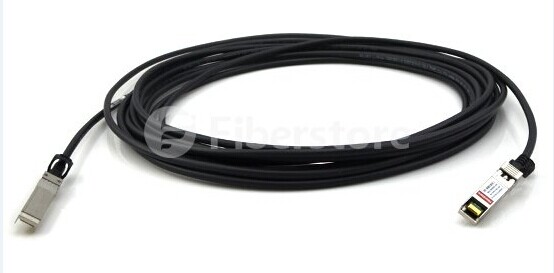Since the need for high data speed increases and the price of optical equipment becomes more affordable, many enterprises start to deploy 10 Gigabit Ethernet in their cooperate backbone, data centers to support high-bandwidth applications. But what should we know about cabling before deploying 10 Gigabit Ethernet?
Fiber Cabling Choices
Three factors should be considered for fiber cable deployment: fiber cable type, 10 Gigabit Ethernet physical interface and fiber optical transceiver module. The following tables show the standard fiber cables, physical interfaces, and transceiver modules applicable to 10 Gigabit Ethernet.
| Fiber Cables | Multimode | OM1 fiber (62.5/125 μm) |
| OM2 fiber (50/125 μm) | ||
| OM3 fiber (50/125 μm) | ||
| Single mode | 9/125 μm fiber | |
| Physical Interfaces | 10GBase-LRM | Max distance 220m |
| 10GBase-S | Max distance 300m | |
| 10GBase-L | Max distance 10km | |
| 10GBase-E | Max distance 40km | |
| 10GBase-Z | Max distance 80km | |
| Transceiver modules | XENPACK | Large form factor |
| X2 | Smaller than XENPACK | |
| XFP | Smaller than X2 | |
| SFP+ | Smallest form factor |
Note: the 10 Gigabit Ethernet physical interface type should be the same on both ends of the fiber link. For example, it is OK to deploy a fiber link with one XFP-10G-MM-SR optics on the left, and one SFP-10G-SR optics on the right. However, one SFP-10G-SR optics and one SFP-10G-LRM optics can’t connect together because of different physical types.
Copper Cabling
As switching standards copper cabling standards develop, copper cabling for 10GbE is more widely used. There are three different copper cabling technologies for 10 Gigabit Ethernet. Each one has different performances and prices.
First, 10GBase-CX4 is the first 10 Gigabit Ethernet copper standard. It’s relatively economical and allows for very low latency. But the form factor is too large for high density port counts in aggregation switches.
Second, Small Form-factor Plus (SFP+) is the latest standard for optical transceivers. 10 Gb SFP+Cu direct attach cables (DAC) directly connect into an SFP+ housing. It’s the best copper solution for servers and storage devices because it has low latency, small form factor and reasonable price.
Third, 10GBase-T is a fully IEEE compliant Ethernet transport technology standard, as defined by IEEE 802.3an-2006. 10GBase-T is to run 10 Gigabit Ethernet over CAT6a and CAT7 copper cabling up to 100 meters. 10GBase-T copper twisted-pair cabling can enable the earlier 10MB, 100MB and 1GB operation. However, 10GBase-T still needs to be improved on its price, power consumption and latency.
| Media | Copper cable | Range (max) | Average Latency |
| CX4 | Twinax | 15m (49ft) | 0.1 μs |
| SFP+ DAC | Twinax SFP+CU | 10m (33ft) | 0.1 μs |
| 10GBase-T | CAT6 RJ45 | 30m(98ft)—50m (164ft) | >1.5 μs |
| CAT6a RJ45 | 100m (98ft) | >1 μs | |
| CAT7 GG45 | 100m (98ft) | >1 μs |
SFP+ Direct Attach Cables
SFP+ direct attach cables integrate SFP+ compatible connectors with a copper cable into a low-latency, energy-efficient, and low-cost solution. SFP+ direct attach cables offer the smallest 10 Gigabit form factor and a small cable diameter for higher density and optimized rack space in 10 Gigabit Ethernet (GbE) uplinks and 10 Gigabit Fiber Channel SAN and NAS input/output connections. To use SFP+ direct attach cables can save you a lot compared with fiber optic solutions. And it can still provide lower latency and save up to 50% power consumption per port than other copper twisted-pair cabling systems.

SFP+ direct attach cables can also provide enhanced scalability and flexibility. The cables connect several servers or storage devices together in a single rack. Thus, it reduces the use of intermediate patch panels. And it’s easy to move racks or deploy one rack at a time since the cabling outside of the rack is limited to the main switch connection.
Fiberstore offers comprehensive cabling solutions for 10 Gigabit Ethernet, including fiber cables, copper cables, and SFP+ direct attach cables and each one has various subcategories. Before deploying 10 Gigabit Ethernet, you need to consider factors of the performance, cost, power consumption and latency and choose the most suitable cabling solution.
Originally published at www.fiber-optic-equipment.com
No comments:
Post a Comment